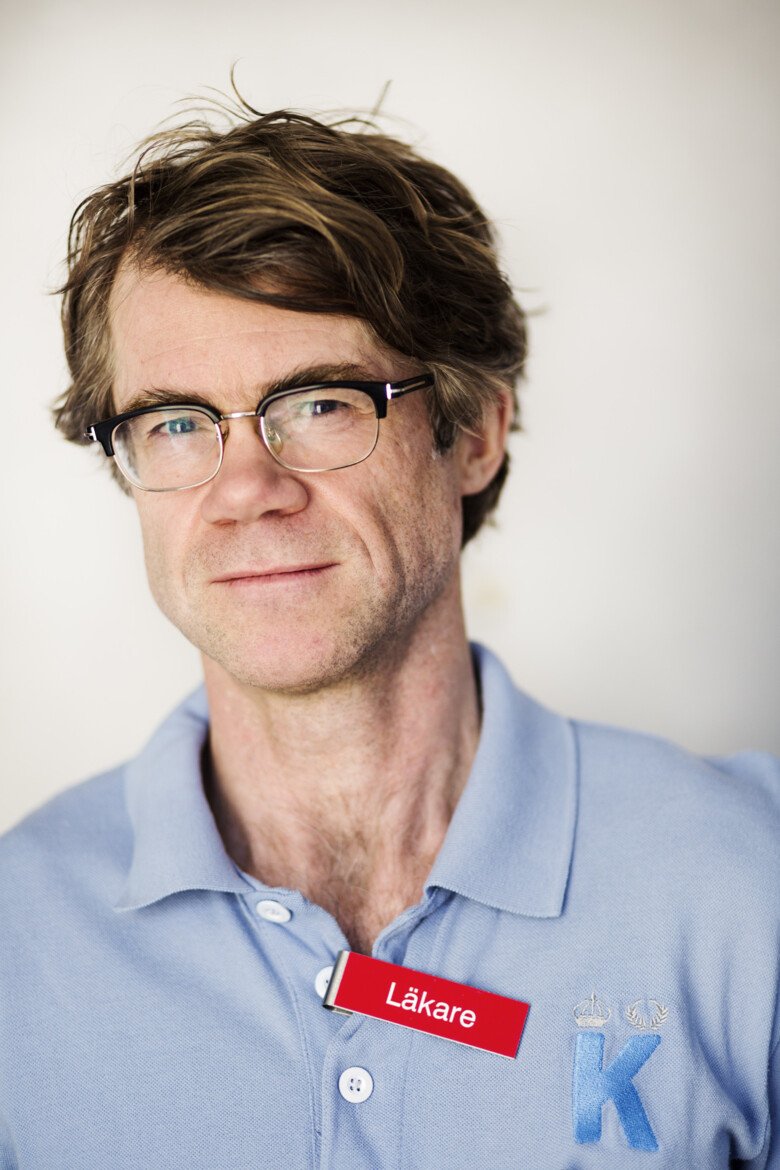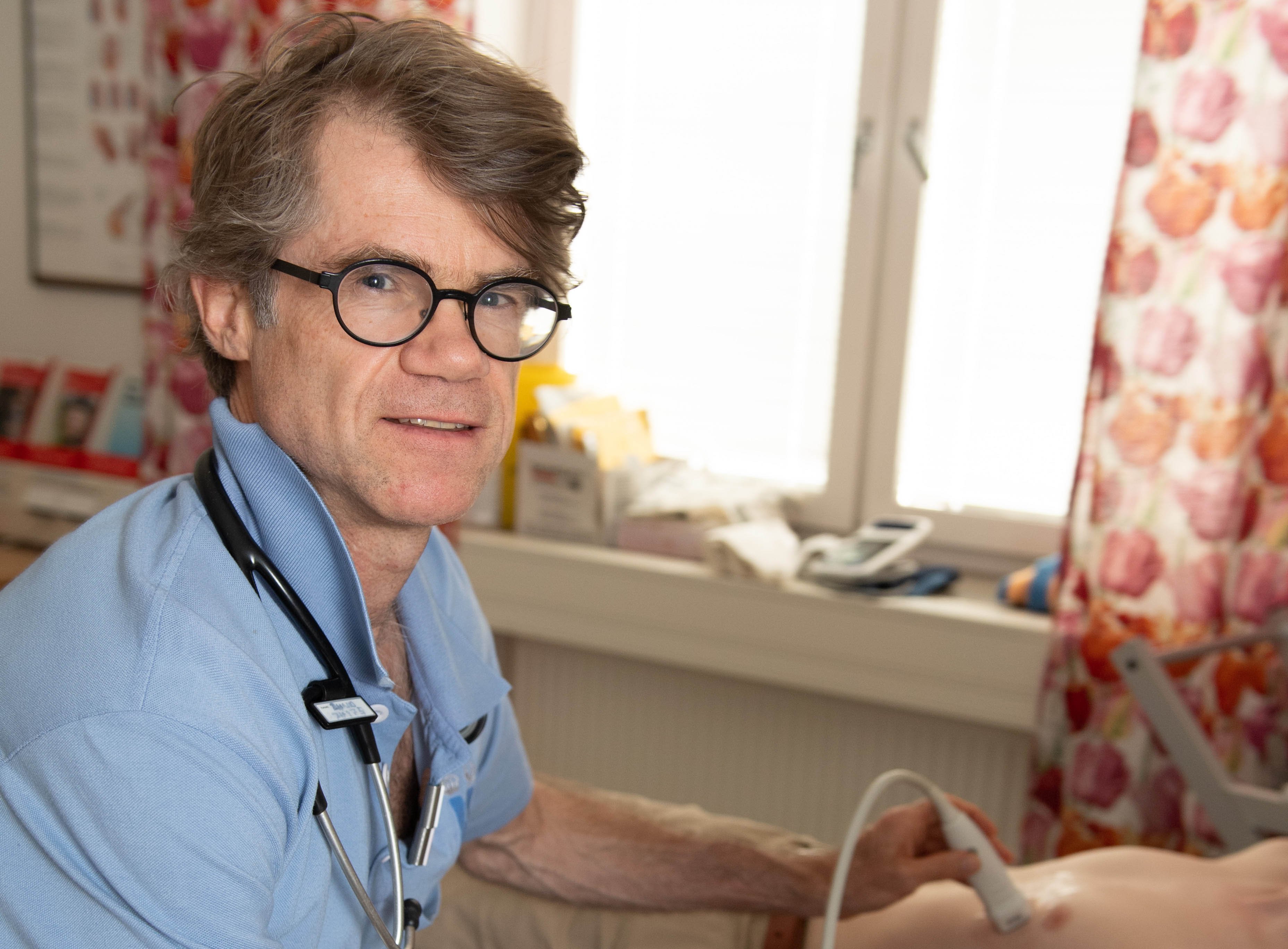Lars Lund: His heart beats for the forgotten
Lars Lund is troubled that many patients with heart failure do not receive the care they need. Through his research, he is attempting to highlight the problem in a systematic way – and find solutions. Meet the doctor who is passionate about improving cardiac care for all.
Name: Lars Lund
Title: Consultant physician at the Cardiology Clinic, Karolinska University Hospital, research group leader at the Department of Medicine, Karolinska Institutet, Solna.
Age: 45
Family: Partner and one son.
Influenced by: Has lived in the USA for large parts of his life and undertook his entire medical training there.
Motto: It is not the work you do that wears you out, but the work you don’t get done.
Daydream: Sometimes I wish that I had researched cancer instead, where the goal is to find a distinct cause and an eventual cure.
Why I am a good researcher: I don’t allow carelessness, vague data or illogical reasoning. I continually ask myself the question: What am I trying to do?

Lars Lund remembers his very first patient as a medical student.
“It was heart failure, with all its symptoms: difficulty breathing, fatigue, swollen body. It all boiled down to the patient’s heart.”
It is the most deadly of all the common diseases and the most common cause of hospitalization. Heart failure is common, serious and causes a great deal of suffering.
“Consequently, new treatments can make a big difference for a large number of people. This gives my work meaning, both as a clinician and a researcher,” says Lars Lund, consultant physician at the Cardiology Clinic at Karolinska University Hospital and research group leader at the Department of Medicine, Karolinska Institutet, Solna.
Not able to pump blood
Three percent of all Swedes suffer from heart failure, wich means that the heart is not able to pump blood around the body as it should. In about half of all sufferers, the heart failure is caused by the heart muscle’s inability to contract, known as systolic heart failure. But in the other half, the problem is instead caused by the heart having a reduced ability to relax again once it has contracted. Over the past decade, we have gradually been learning more about the latter form, known as diastolic heart failure, which is the main focus of Lars Lund’s research.
“This sounds strange, but until recently this group of patients, who suffer greatly from their disease, have been completely invisible. People who sought help have previously been dismissed as tired and old. But, having learned more, we have now realised that diastolic heart failure is a separate diagnosis. Our research goal is now to understand the disease better, find ways to treat it and make treatment available to patients,” says Lars Lund.
Using existing registries containing information about all of Sweden’s heart failure patients, he and his colleagues have been able to demonstrate that this form of heart failure is more common among women and the elderly, and that the reason why these patients are more frequently affected is uncertain. Registry studies are also the basis of what Lars Lund believes is his most important discovery – that commonly used blood pressure medications can improve survival in these patients. This study was published in 2012 in the well-regarded American scientific journal JAMA.
“The results need to be verified, but if they are correct, this means that the lives of more than 100,000 Swedes can be extended. It’s a great feeling,” he says.
Basic physiological measurements
In order to understand diastolic heart failure better, Lars Lund’s research group is supplementing the registry studies with basic physiological measurements of, for example, blood flow and blood pressure in heart failure patients in a special research laboratory located one floor above the coronary care unit. In this way, they hope to find biomarkers that can simplify diagnosis. In addition, they are investigating in detail how the heart muscle functions by comparing molecular mechanisms in cells from mice and people with heart disease.
It was during cellular studies like this that Lars Lund and his colleagues at Karolinska Institutet and Columbia University in New York made their most surprising discovery – that heart failure is visible in muscles other than just the heart.
“The molecular changes that appear in the heart muscle cells in heart failure also exist in skeletal muscle cells. This indicates that heart failure is a disease that affects the entire body,” says Lars Lund. He believes it is important to understand that it is a heterogeneous disease with multiple causes.
“We won’t find a gene that can explain heart failure all on its own, there isn’t one. When the heart has already suffered damage, it also becomes hard to completely cure heart failure, and it will continue to be a serious illness for many people. Nevertheless, we can already achieve real improvements for patients, such as a reduction in hospitalisation and improved quality of life, and there is hope that the future will bring new treatments,” he says. Thanks to Lars Lund’s academic questions being constantly connected to the clinical needs he sees among his patients, he has the opportunity to adapt his research to care.
“Every day, the patients have questions that I attempt to tackle in my research. And I can also recruit research subjects from among the patients.” But in recent years, the opportunity to find research subjects has decreased due to serious cutbacks. The number of beds at the Cardiology Clinic at Karolinska Institutet has decreased dramatically in recent years.
Problems in recruiting research subjects
Similar changes have taken place at other large hospitals in the country. This has not only caused problems in recruiting research subjects, but has also, which is worse, resulted in poorer patient care according to Lars Lund.
“Our research shows that the treatment of heart failure patients in Sweden is seriously neglected. Many more patients could be helped if they were given the right medication and a large proportion of those who are in need of more advanced care such as pacemakers, heart pumps or transplants, do not currently receive them. One explanation is that many patients never get to see a specialist physician and therefore do not receive the right treatment. There are also too few beds allocated to heart failure patients in proportion to the incidence and severity of this disease,” he says.
This problem has been observed in several places and a large collaborative project involving Karolinska Institutet and Stockholm County Council, called 4D, has heart failure as one of four priority diseases. The 4D project has goals that include speeding up the transformation of research results into new and improved treatments.
Lars Lund is participating in the project and believes that it is a good way to avoid the feeling of dejection. He also thinks his research will have an impact on the situation:
“We have recently published a study analysing how to prioritise heart failure patients when resources are limited. The hope is that this can contribute to those most in need getting the help they require,” says Lars Lund.
Being committed both to the patients and to research takes time and effort. Sometimes it is hard to find the time for research; he is currently only doing it half-time. But, despite this, meeting patients is not something Lars Lund wants to do without.
“I am afraid of losing the expertise. But also the link to reality - patients reflect the world in which we live.”
In his role as a doctor, Lars Lund often meets relatives who are surprised by the deficiencies in the healthcare system such as the lack of single rooms, postponed treatments and stressed staff. When he speaks about this subject he gets fired up.
“For me it is as clear as daylight that these deficiencies are related to how we have chosen to prioritise society’s resources. Do we want everyone to afford a flat-screen TV, a newly renovated bathroom and a nice car? It comes at the expense of a well-functioning healthcare system. But most people only realise this when they or someone close to them become ill. Personally, I think that many of those who have been in this situation would prefer to give up
their new TV or car if they knew that it would give them the chance to talk to the doctor on a Saturday.” Perhaps even more so if that committed doctor is Lars Lund.
Lars Lund on…
… translational research:
“Really working the whole way from molecule to patient is hard for an individual researcher, but done correctly it provides a unique opportunity to link mechanisms to everyday patients.”
… good research:
“Requires you to be able to formulate a strict, rigorous and specific question for yourself and others. Well-organised implementation can then later provide valid and reliable results.”
… saving money in the healthcare system:
“Healthcare must be allowed to cost money. The question that should be asked is instead whether it is value for money, cost-effective and whether we are prepared to pay for it.”
… leading a research group:
It is like being a researcher and running a small business at the same time. I have responsibility for the budget, staff and production of my research group, which currently consists of 10 people.”
Text: Cecilia Odlind. First published in Medical Science 2015
More reading

Improving understanding of diastolic heart failure
Findings about the causal relationship between heart failure and problems in the heart’s relaxation phase are relatively new. Lars Lund is conducting research into the underlying mechanisms of diastolic heart failure and how it can be treated.
